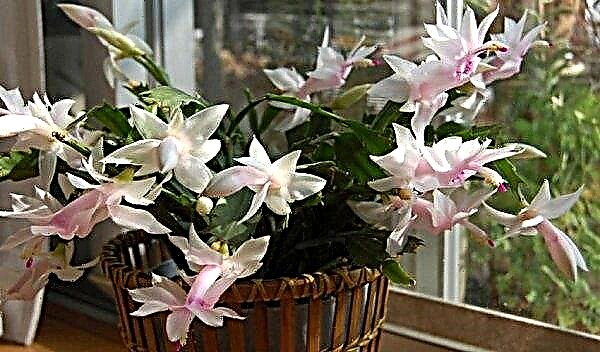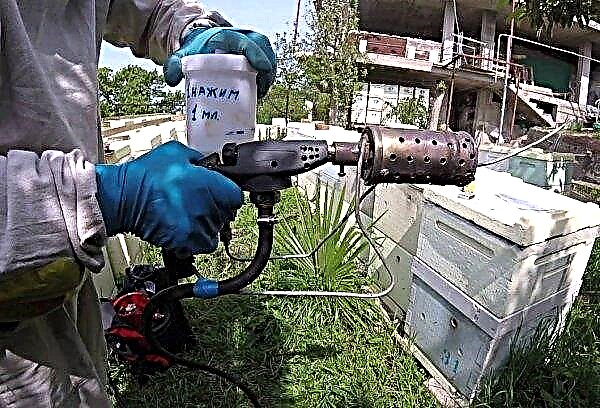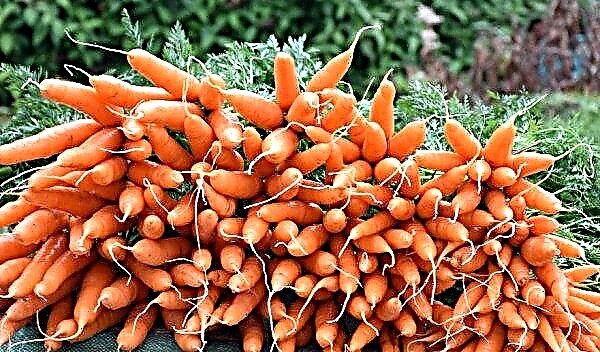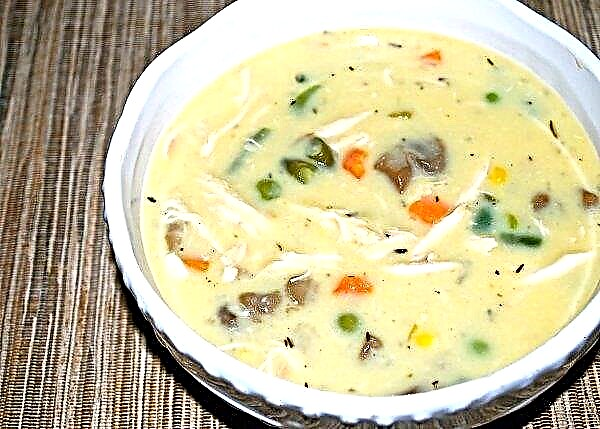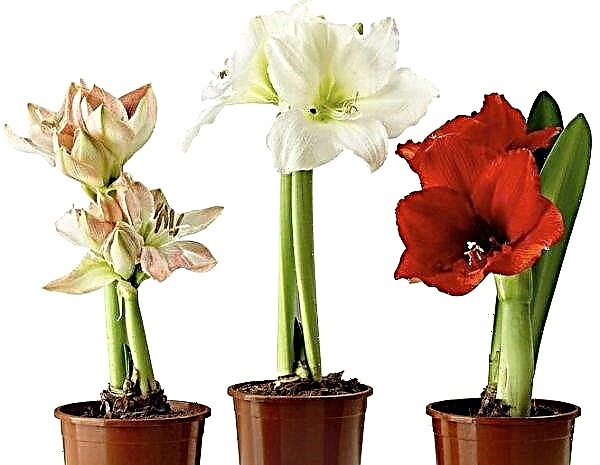There are many varieties of potatoes, which are characterized by long shelf life, low cultivation and climatic conditions. Their representative is the variety Breeze.
Variety Description and Characterization
Potato Breeze was bred in 2005 by Belarusian breeders of the Scientific and Practical Center of the National Academy of Sciences of Belarus for potato and fruit and vegetable growing.
This variety forms straight bushes of medium height. The stems are thinner than the rest of the varieties. The leaves are large, saturated green. The inflorescence is in the form of a wreath of medium size, red-violet. Root crops are large, oval, smooth, a large number of eyes, in the bush there can be 8-12 pieces. The flesh is yellow, which is not lost even during heat treatment. The average weight of the fetus is up to 130 g.
Advantages and disadvantages
- The advantages of the variety are as follows:
- gives a large yield;
- he has an attractive presentation;
- resistant to mechanical damage;
- high immunity to diseases such as mosaic, mushroom, potato cancer;
- long stored;
- universal in use;
- high taste;
- unpretentious to the type of soil and climatic conditions.
- The disadvantages include:
- sensitivity to diseases such as scab, late blight and potato nematode.
Did you know? From toarchips Breeze are preparing chips, french fries, it is ideal for freezing.
Ripening dates and productivity
The breeze belongs to mid-early grades. The time from planting to digging up root crops is 70–80 days. Productivity is quite high - about 400 kg / ha.
Taste qualities
This variety is quite appetizing. The tasting score of boiled potatoes is 7 points out of 10. The amount of starch is up to 16%, dry matter - 20.1%, reducing sugars - 0.21%.
Photo gallery
Optimal landing times
Planting begins from the moment when the soil warms up to +7 ... + 8 ° C with a depth of 12 to 15 cm. This mainly occurs in late April - early May.
Planting and growing potato varieties
Breeze can be planted in different regions, since it grows in any soil and in any climate zone. But in order for the crop to be high enough, you need to adhere to the basic tips for planting and growing this variety, which are the correct preparation of the soil and planting material, in particular planting patterns, care, etc.
Crop rotation rules
It lies in the fact that planting Breeze potatoes in the same place can be done no more than 1 time in 3 years.
Soil requirements
Preparing the soil for planting is one of the important activities that directly affects the quality and size of the crop. It consists of the following stages:
- before digging, fertilize the soil with humus;
- dig a garden in the depth of one bayonet shovel in the fall;
- in the spring to loosen the earth, removing weeds;
- the soil should be sufficiently moist.
Important! Best of all, Breeze potatoes grow on land that is regularly watered to prevent overdrying.
Preparing planting material
A very important point in the cultivation of Breeze potatoes is the preparation of planting material. The main requirements are as follows:
- in autumn, it is necessary to postpone healthy and intact seed tubers separately from other root crops;
- seed before planting can be treated with disinfectants (Prestige, Maxim, Kruiser) and stimulants (Poteytin, Mikom);
- in the spring to germinate and warm the seeds for 13-15 days at an air temperature of +12 ... + 13 ° С;
- the sprouted eyes on the planting material should be thick and short;
- 2 days before planting, cover the root crops with a bag or other material so that they harden;
- medium potatoes are best suited for planting, but larger ones can also be cut into smaller pieces.

Landing pattern
It has such features:
- the hole must be made 10 cm deep;
- the distance between root crops in the hole is up to 40 cm;
- the distance between the rows is 70 cm.
Important! Seed potatoes should be smooth, even, dry, with a healthy skin.
Features of potato care after planting
Care for potatoes Breeze consists of the following actions:
- Before germination of root crops, monitor the soil and carry out loosening so that a crust does not appear;
- when the first shoots appear, pry the earth between the rows, as well as after watering or rain;
- when the bushes reach a height of up to 20 cm, they need to be earthed up, providing root air with air;
- if necessary, water the beds in the early morning and evening, providing the plant with protection from the sun;
- weed regularly;
- several times you can feed with mineral fertilizers: superphosphate or ammonium sulfate.

Diseases and pests of potatoes
The main enemies of the Breeze potato are:
- Late blight - fungal disease. It can be eliminated with the help of fungicides (“Quadris”, “Kuproksat”, “Metaxil”), as well as preventive measures: select healthy planting material, regularly weed the garden, and avoid rotting of the bushes.
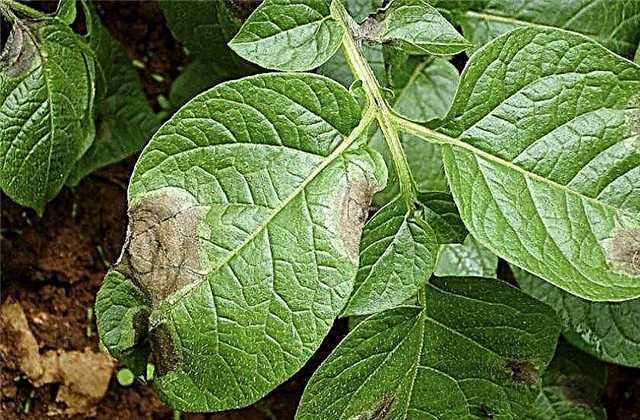
- Scab - A disease that affects root crops can destroy more than half of the crop. You can fight it by treating the seed tubers with a special drug (Fungazil, Rovral Akvaflo, Maxim 025 FS).

- Potato nematode - a parasitic worm that affects not only the stems, roots of potatoes, but also its tubers. It is very difficult to identify and destroy this pest in time. Therefore, it is best to carry out preventive measures: adhere to crop rotation; Use healthy seed process infected plots of land with Nemabaktom; fertilize the soil with organic fertilizers for the propagation of earthworms; dig the soil deep in the fall.
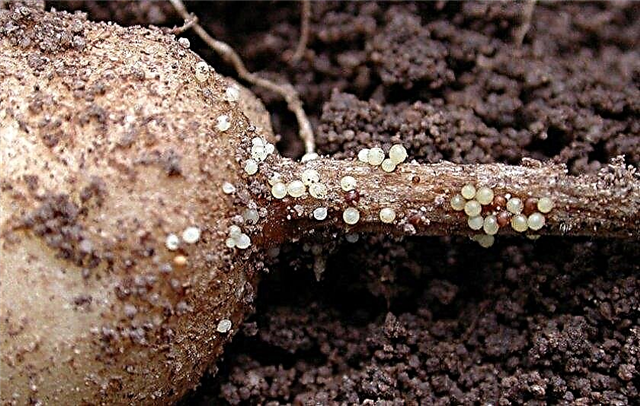
- Colorado beetle - an insect that can completely destroy all bushes in a few days.
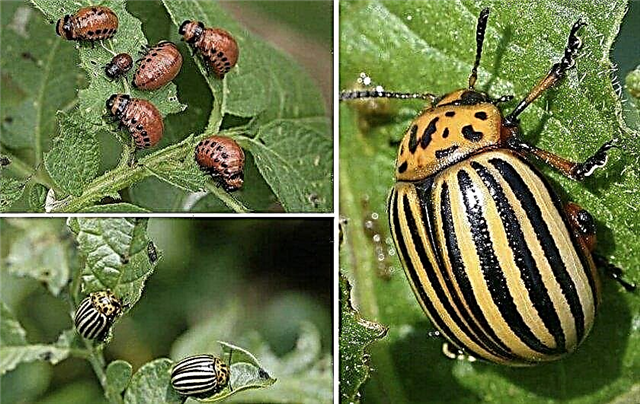 It is becoming increasingly difficult to deal with it every year, as it adapts to new chemicals and becomes resistant to them. Therefore, there are many ways to protect against this pest:
It is becoming increasingly difficult to deal with it every year, as it adapts to new chemicals and becomes resistant to them. Therefore, there are many ways to protect against this pest:
- mechanical method - picking up beetles and their larvae by hand, picking off sheets of potato with pest eggs;
- chemical method - treatment of tubers and bushes with chemicals ("Confidor", "Commander", "Napoval", etc.);
- non-chemical method - sprinkling of bushes and row-spacings with ash, corn flour, fresh sawdust from conifers or spraying with infusions and decoctions of bitter pepper, tobacco, dandelion, garlic, wormwood, etc.
Features of harvesting and storage of crops
Harvesting is possible 70–80 days after the tubers are planted in the ground. Before that, you need to mow the tops 2 weeks before harvesting. This type of potato belongs to those varieties that are well preserved. But when the tuber warms up, as well as in bright light, the root crops can begin to sprout. Therefore, they must be kept in a dry basement at a temperature of +2 ... + 5 ° C.
But when the tuber warms up, as well as in bright light, the root crops can begin to sprout. Therefore, they must be kept in a dry basement at a temperature of +2 ... + 5 ° C.
Did you know? The largest potato in the world weighed approximately 8 kg.
The breeze belongs to the unpretentious varieties in cultivation and care, as well as with universal taste qualities that will appeal to almost everyone: lovers of boiled mashed potatoes, and fans of fried potatoes or chips.




 It is becoming increasingly difficult to deal with it every year, as it adapts to new chemicals and becomes resistant to them. Therefore, there are many ways to protect against this pest:
It is becoming increasingly difficult to deal with it every year, as it adapts to new chemicals and becomes resistant to them. Therefore, there are many ways to protect against this pest: